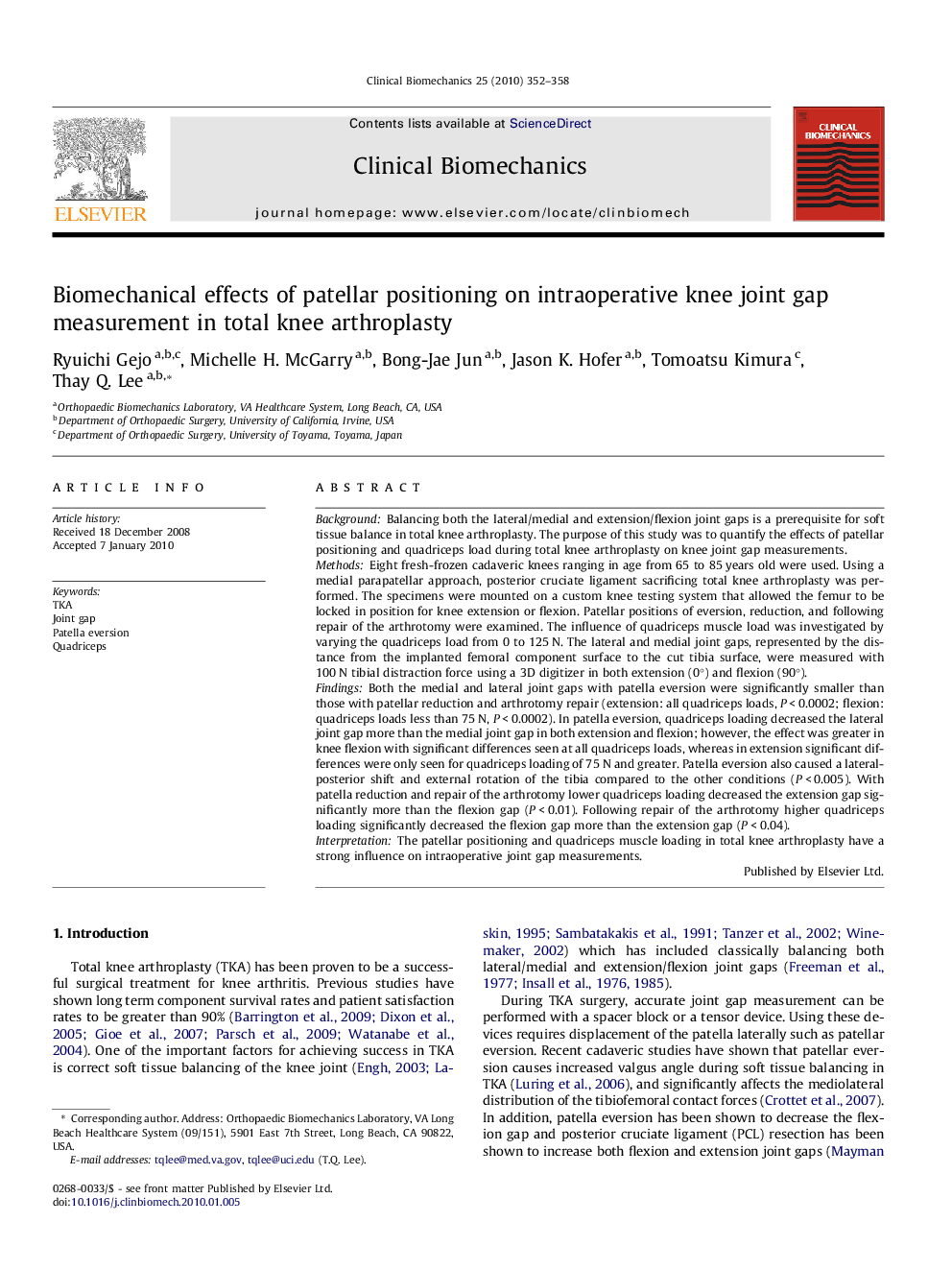| Article ID | Journal | Published Year | Pages | File Type |
|---|---|---|---|---|
| 4050621 | Clinical Biomechanics | 2010 | 7 Pages |
BackgroundBalancing both the lateral/medial and extension/flexion joint gaps is a prerequisite for soft tissue balance in total knee arthroplasty. The purpose of this study was to quantify the effects of patellar positioning and quadriceps load during total knee arthroplasty on knee joint gap measurements.MethodsEight fresh-frozen cadaveric knees ranging in age from 65 to 85 years old were used. Using a medial parapatellar approach, posterior cruciate ligament sacrificing total knee arthroplasty was performed. The specimens were mounted on a custom knee testing system that allowed the femur to be locked in position for knee extension or flexion. Patellar positions of eversion, reduction, and following repair of the arthrotomy were examined. The influence of quadriceps muscle load was investigated by varying the quadriceps load from 0 to 125 N. The lateral and medial joint gaps, represented by the distance from the implanted femoral component surface to the cut tibia surface, were measured with 100 N tibial distraction force using a 3D digitizer in both extension (0°) and flexion (90°).FindingsBoth the medial and lateral joint gaps with patella eversion were significantly smaller than those with patellar reduction and arthrotomy repair (extension: all quadriceps loads, P < 0.0002; flexion: quadriceps loads less than 75 N, P < 0.0002). In patella eversion, quadriceps loading decreased the lateral joint gap more than the medial joint gap in both extension and flexion; however, the effect was greater in knee flexion with significant differences seen at all quadriceps loads, whereas in extension significant differences were only seen for quadriceps loading of 75 N and greater. Patella eversion also caused a lateral-posterior shift and external rotation of the tibia compared to the other conditions (P < 0.005). With patella reduction and repair of the arthrotomy lower quadriceps loading decreased the extension gap significantly more than the flexion gap (P < 0.01). Following repair of the arthrotomy higher quadriceps loading significantly decreased the flexion gap more than the extension gap (P < 0.04).InterpretationThe patellar positioning and quadriceps muscle loading in total knee arthroplasty have a strong influence on intraoperative joint gap measurements.
